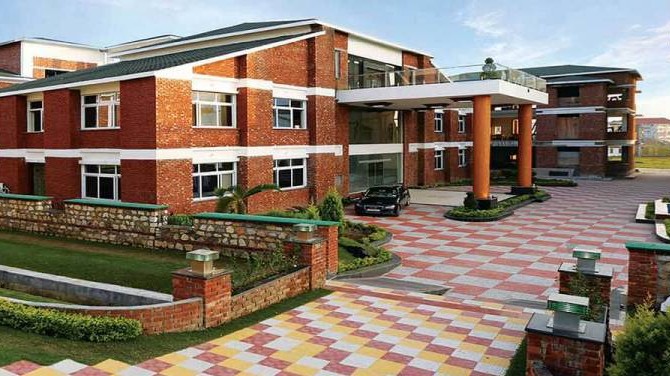Boarding schools in India have a rich and diverse history, reflecting the country’s educational, cultural, and socio-economic transformations. Over centuries, these institutions have evolved from being centers of traditional learning to becoming modern establishments fostering holistic development. This evolution underscores the adaptability of Indian education to changing times, emphasizing the importance of discipline, academic excellence, and extracurricular engagement.
Ancient Gurukul System: The Foundation
The concept of boarding schools in India can be traced back to the ancient Gurukul system, a model of education deeply rooted in Indian culture. In Gurukuls, students referred to as shishyas, resided with their teacher or guru. Learning extended beyond academics, encompassing life skills, moral values, and physical training. The emphasis was on a teacher-student relationship that nurtured respect, discipline, and holistic growth.
Gurukuls offered education in subjects like philosophy, mathematics, astronomy, and warfare, ensuring students were well-rounded individuals prepared for societal responsibilities. This system, although simplistic, laid the groundwork for structured education and the residential model that boarding schools embody today.
Colonial Influence: Western Educational Ideals
The arrival of the British in India in the 17th century brought significant changes to the education system. Western ideals began to influence Indian society, introducing modern curricula, administrative structures, and boarding schools modeled after elite institutions in England.
Schools like the Bishop Cotton School in Shimla (established in 1859) and The Doon School in Dehradun (founded in 1935) were inspired by British public schools. These institutions emphasized academic rigor, character building, and leadership skills, often catering to the children of British officials and Indian elites.
While these schools maintained a Western style of education, they also began to incorporate Indian values, blending traditional and modern approaches. The rise of such schools marked a shift from Gurukul’s informal, mentor-centric model to an institutionalized system that prioritized standardized curricula and examinations.
Post-Independence: Nation-Building Through Education
After India gained independence in 1947, boarding schools played a pivotal role in shaping the nation’s future. The focus shifted to creating a balanced education system that combined Western methodologies with Indian traditions and values.
Prominent schools like Mayo College in Ajmer and Rishi Valley School in Andhra Pradesh became symbols of excellence, fostering leadership qualities and preparing students for global challenges. The introduction of co-education in many boarding schools during this period reflected societal progress and the growing emphasis on gender equality.
The government also established Sainik Schools in the 1960s to prepare students for careers in the armed forces. These schools focused on discipline, patriotism, and academic excellence, catering to middle-class families and ensuring a broader reach of quality education.
Modern Era: Emphasis on Holistic Development
The late 20th and early 21st centuries witnessed a significant transformation in Indian boarding schools. With globalization and technological advancements, the educational landscape evolved rapidly. Modern boarding schools began adopting international curricula, such as the International Baccalaureate (IB) and Cambridge Assessment International Education (CAIE), to cater to students aspiring for global careers.
Institutions like Woodstock School in Mussoorie and UWC Mahindra College in Pune became popular for their diverse student bodies and international standards. These schools emphasized extracurricular activities, cultural exchange, and global citizenship, preparing students to thrive in a multicultural world.
Additionally, contemporary boarding schools have incorporated advanced facilities, such as smart classrooms, laboratories, and sports complexes, ensuring a balanced approach to academics and extracurricular activities. The focus on mental health and well-being has also grown, with many schools offering counseling services and life skills training to address the emotional and psychological needs of students.
Challenges and Adaptations
Despite their evolution, boarding schools in India have faced challenges, including the high cost of education, which limits accessibility for many families. However, scholarships, government initiatives, and philanthropic efforts have made quality education more inclusive.
The COVID-19 pandemic posed unprecedented challenges, disrupting the residential model and forcing schools to adapt to online learning. This shift highlighted the importance of integrating technology into education and reimagining the traditional boarding school experience.
The Way Forward
As India progresses, boarding schools continue to evolve, adapting to changing societal needs and technological advancements. Today’s schools aim to nurture not only academic achievers but also socially responsible and empathetic individuals. Emphasis on sustainability, innovation, and inclusivity ensures that boarding schools remain relevant in the 21st century.
With a rich heritage and a forward-looking approach, Indian boarding schools are poised to continue playing a vital role in shaping the leaders of tomorrow. Their journey from ancient Gurukuls to modern institutions is a testament to the resilience and adaptability of Indian education.
Conclusion
The evolution of boarding schools in India reflects the nation’s dynamic history and its commitment to education. From the Gurukul system’s holistic approach to the modern era’s global outlook, these institutions have adapted to meet the needs of each era. As India navigates the complexities of the modern world, boarding schools remain integral to fostering intellectual, emotional, and ethical growth, ensuring a brighter future for generations to come.





